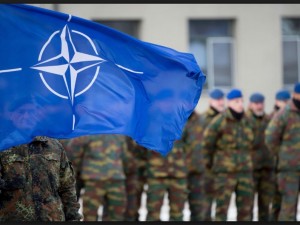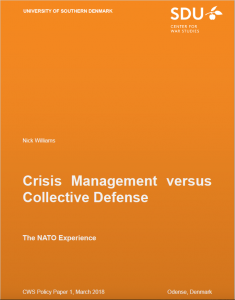Crisis Management versus Collective Defense: The NATO Experience
By Nick Williams, Center for War Studies (CWS)
In a recently published report by the Center for War Studies, Nick Williams provides a detailed timeline of the development of NATO from a collective defense organization to a crisis management one. The report also highlights the power play and relations between NATO members and Russia. The author concludes the report by stating that the effective development of the crisis management response system is still vulnerable to the power of its collective defense.
The report starts by describing NATO’s role during the Cold War and how it adapted from its deterrence role to that of crisis intervention beyond its borders. The main question that the paper tries to answer is whether NATO’s current role of crisis management would have to be adapted or changed back to collective defense in order to face the revived Russia. The author then goes on about describing NATO’s characteristics during the Cold War and how they have developed with each military challenge they have faced.
In addition, the report talks about the significance that the Balkans have had in the development of NATO’s role. Also, NATO’s crisis management procedures have changed and developed greatly, making it a more hierarchical following six phases. However, the author points out that this “Crisis Response System requires political decisions at all key points and phases in the process”, making it a long and slow process that might not be suitable for quick decision making in case of a crisis. This leaves the question of whether the developed role of NATO will serve its purpose of countering the resurgent Russia.
Read more here:




